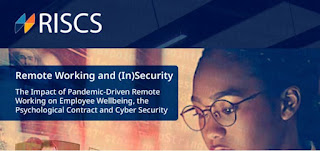Exploring the Future of Transport in Australia: Challenges and Opportunities in a Vast Land: Oliver Bock-Brown
Australia is a large country. It’s one thing to know this, another to experience it. To reach the southeast of the country—where you’ll find Melbourne and Sydney—you first have to fly across almost the entire expanse of the country. This part of the flight alone is well over four hours, which is slightly longer than it would take to fly from the UK to Turkey. That, of course, is only a small part of the overall journey, which comes in at something like twenty-two hours of flying. I recently got to experience this journey when I had the chance to visit Australia. And with an interest in future impacts of autonomous mobility systems—and after recovering from the jetlag—I used the trip both to explore the unique Australian context of transport systems, and to speak to a range of people about the subject.
The sixth largest country in the world, Australia has a land area of nearly 7.7 million square kilometres. That’s broadly similar in size to the United States, but with a population of only 25 million people or so. This means that many parts of the country are relatively isolated, with long distances between cities and towns. This presents challenges when it comes to transportation, and means Australia takes a different approach to transport than do countries and cities in Europe, for instance. Its approach is more closely aligned with the USA, with a heavy reliance on private cars that informs both the design of cities and the sprawl of suburbs. In part, this car-dominance is thanks to the size of the country, but politics and economics also weigh in. It can, for instance, be difficult and expensive to build and maintain road and rail networks, given the size. In addition, Australia’s climate can be harsh and unforgiving, with extreme heat and drought in many parts of the country. Furthermore, Australia’s political system is a federal one, with power divided between the national government and individual states and territories, which can make implementing transportation policies on a national level challenging.
This means there can be significantly different approaches at a local level. Melbourne, where I first landed, is a wealthy city founded in 1835 and named after the British Prime Minister, Lord Melbourne. It is built on the lands of the Boonwurrung, Wathaurong and Wurundjeri peoples, and in the mid-19th century, the discovery of gold meant the city quickly became a major economic hub. Large numbers of people moved to the region, and the wealth generated in those years paid for, amongst other things, the city’s tram network. This has been expanded and modernised since, and as a result—despite the heavy reliance on private cars in the city—it is an easy city to get around for natives and travellers, with tram travel in the central business district even free. This, combined with a large range of amenities and culture, almost certainly contributes to Melbourne being rated as one of the world’s more liveable cities. Even if the grid-based layout of city blocks is strangely disorienting for someone used to old European cities.
Adelaide, by way of contrast, feels much less traversable without a car. Cars clearly have priority here, with pedestrian crossings few and far between, forcing pedestrians to feel like they’re taking their life in their hands as they run across wide, multi-lane roads. And like other cities in Australia, even when you do find a crossing, cars can still turn in front of you. This, unsurprisingly, is very off-putting to a European used to cars stopping when pedestrians have a green light. Meanwhile, trams in Adelaide are also limited, especially compared to Melbourne. This can likewise be said for Sydney, with neither trams nor trains going where I needed to get, meaning walking long distances was frequently the only option. However, this is a more pleasant experience in central Sydney, which is laid out more like a European city with curving, winding roads—as opposed to the alien grid of Melbourne and Adelaide. This had the effect of making the city feel more like it was designed around people rather than cars. But where Sydney really differs is its use of ferries. These are a great addition, and often a very convenient choice to get around the city. They’re fast, scenic, direct, with little traffic to contend with, and as a form of public transport, they are relatively low-cost, too. It’s sometimes hard to realise how limiting streets and congestion can be, but ferries that avoid those streets makes clear some of the benefits. It also highlights the appeal of more radical future mobility options, like undergrounding transport or flying taxis.
Even in just three cities in southeast Australia, there are therefore many approaches and needs for transport systems. When you factor in outlying and rural areas, those needs change significantly. While I only got to the outer suburbs, it was clear that cars are essential outside city centres, and it’s very difficult to offer alternatives. One person I spoke with who lived in the suburbs noted that, even though they would like to use public transport, a car is basically essential as it’s far cheaper, far quicker, and far more convenient. When you go beyond the suburbs to the vast expanse of Australia’s rural areas, the difficulty of offering alternatives to private car ownership only increases. I spoke to a couple of people who worked within transport in Queensland, which is a state roughly seven times the size of Great Britain and two and a half times the size of Texas, but with a population of only 5 million. They both noted the sheer scale of the state meant alternatives to private car ownership were basically impossible at present, despite the negative impacts of high car-dependency. However, mobility-as-a-service (MaaS) is an attractive development that’s being explored in Queensland, potentially in combination with autonomous vehicles. In the future, this could improve convenience and accessibility in the state.
This last point raises the broader question of precisely which values we should be prioritising when thinking about future transport options. Is it convenience, or accessibility? Or is it sustainability? Or equality? Safety? The values that get secured, to draw on Graham Smith’s work, will significantly influence the future that society ends up with—but if we don’t ask the question of what should be secured, of what the future should look like, we may end up with a future that looks remarkably like the current system. This is a potential problem when there are so many injustices baked into existing mobility systems.
Some organisations are taking the lead in asking questions like this, and in exploring what the longer-term future should look like. Transport for New South Wales, for instance, is one example. They already have a forty-year future transport plan—and indeed look much further into the future than many other government agencies do—and are continuing this work, exploring what stakeholders want in a future transport system. But there are challenges in trying to push for alternative transport futures when mobility and transport are so deeply wrapped up with culture in Australia, as in most other countries. There is a great deal of pride in car ownership, for example, which in Australia has often meant utes—essentially a pickup, but often based on a passenger car chassis. But there is also pride in local involvement in transport, past and present, from car manufacturing to aviation. This was brought home to me at an aviation museum in Adelaide, as a guide explained how important a whole range of planes, from modern fighters to old helicopters, were to the state’s history. Similarly, in Sydney, their maritime past appeared to play a significant role in shaping the city’s identity, not least because of the various vessels used to travel from Europe in the early colonial days. These pasts have shaped these cities and cultures, and made them what they are today. However, it’s quite possible that through imagining different futures, these urban landscapes could be quite drastically different in the future; a Sydney focused more on trams (or light rail, in local parlance) and shared autonomous vehicles in the future could end up looking very different to one that focuses on building more roads.
The broader importance of thinking about futures and methods became apparent as I attended workshops, seminars, and spoke with academics, industry folks, and civil servants while in the country. There were a few sessions, for instance, organised by ADM+S and the Emerging Technologies Lab at Monash University that drew together a number of interesting people (plus me). A contingent from Volvo Cars and Halmstad University, Sweden, spoke about and organised events on engaging with human-centred futures, with Volvo leading the way in this work in industry. Elsewhere, there was talk about more creative ways to engage with transport futures, on the kind of pain points people experience in using transport, and on the potential impact on urban design of different possibilities. The complexity of politics, business, and the different motives and values these groups have also became clear. Overall, it adds up to a complex issue that is in the midst of significant change, with transport systems arguably changing faster than they have at any point in the past century. It’s therefore important to put people at the centre of this change, and not let technology development spiral off in a direction that doesn’t suit their needs. Doing so can help develop strategies that are more inclusive, responsive, and resilient, and that better meet the needs of people who’ll use these future systems.
This matters because, alongside the disruptive emergence of electric cars right now, there is also the development of autonomous technologies that will have far wider impacts on systems as disparate as energy networks and labour markets. This disruptive change is likely to come far faster than many might imagine, which means now is an opportune time to consider the future impacts of these changes, and to consider the kind of principles we want to put at the core of work on these systems and technologies—whether that be safety, efficiency, accessibility, sustainability, equality, or something else. This trip helped contextualise many of these issues for me, whilst also making clear the importance of thinking about the local context in work on disruptive change. It’s sometimes all too easy to lose sight of the little things when exploring disruptive global change like autonomous transport, but even though mobility is fundamental to big things like prosperity and social mobility, it is also something that enables little moments of pleasure in busy lives. For instance, one story stuck with me from a workshop I attended, when someone told me about the pleasure she got from a simple twenty-minute ferry journey she liked to do for fun, from Circular Quay in Sydney out to Manly. Inspired by her description, I made sure to take that ferry myself when I arrived in Sydney, and it was perhaps one of the most memorable moments of the trip for me. And that sort of personal experience is something that may be hard to capture in technical engineering work, but is arguably no less important for that fact.



Comments
Post a Comment